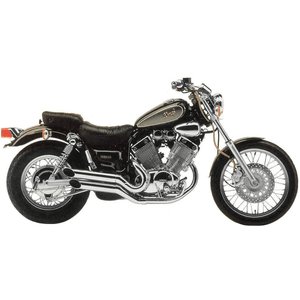Yamaha XV 535 Virago (1995–2003): A Timeless Cruiser for the Everyday Rider 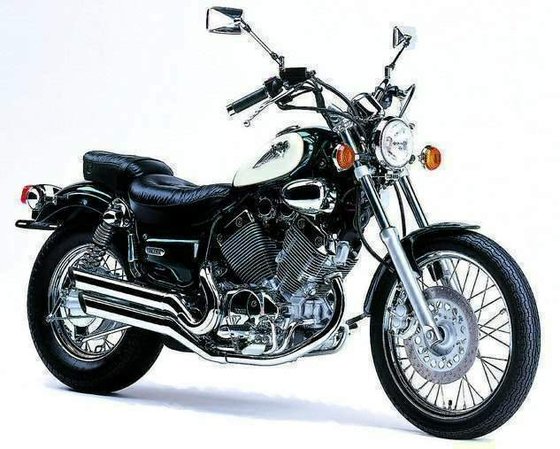
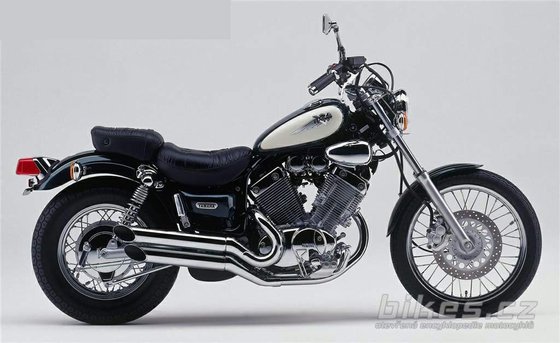
Introduction
The Yamaha XV 535 Virago isn’t just a motorcycle—it’s a gateway to the cruiser lifestyle. Produced from 1995 to 2003, this model generation solidified Yamaha’s reputation for building accessible, reliable, and stylish machines that appeal to both newcomers and seasoned riders looking for a laid-back ride. With its air-cooled V-twin engine, low-slung chassis, and minimalist design, the Virago feels like a trusted companion rather than a high-strung performance machine. After spending a day with this bike, it’s clear why it remains a favorite in the used market: it’s forgiving, practical, and dripping with character.
Engine Performance: Smooth, Steady, and Uncomplicated 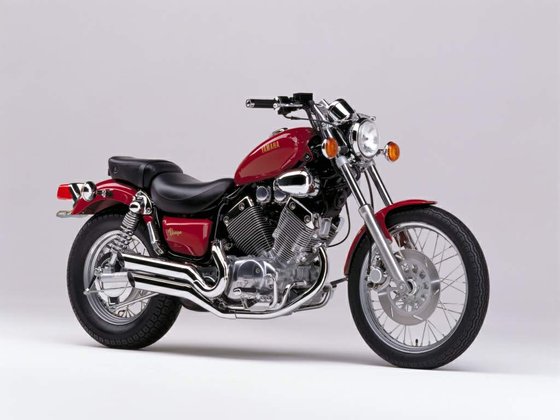
At the heart of the XV 535 Virago lies a 535cc air-cooled V-twin engine, a configuration that’s become synonymous with cruiser DNA. The 70-degree V-angle and SOHC design prioritize simplicity over complexity, producing 44 HP at 7,500 RPM and 46 Nm (34 lb-ft) of torque at 6,000 RPM. These numbers won’t set your hair on fire, but they don’t need to. The Virago’s power delivery is all about the midrange, offering a satisfying pull from stoplights and enough grunt to handle highway speeds without vibrating your fillings loose.
The Mikuni BDS34 carburetors are a hallmark of this era, providing crisp throttle response once warmed up. Cold starts require a bit of patience (and occasional choke finesse), but once the twin cylinders settle into their rhythm, the engine hums with a throaty, uneven burble that’s music to a cruiser enthusiast’s ears. The five-speed transmission shifts with a reassuring clunk, though the gap between first and second gear feels wider than ideal.
What stands out most is the engine’s durability. These units are known to clock over 100,000 km (62,000 miles) with basic care, thanks to straightforward components like NGK BPR6ES spark plugs and a maintenance schedule that doesn’t require a engineering degree to follow. Keep the oil changes regular (2.8 liters of SAE 10W-40 with the filter), and this engine will outlast your enthusiasm for chrome polish.
Ride and Handling: Stability Over Sportiness 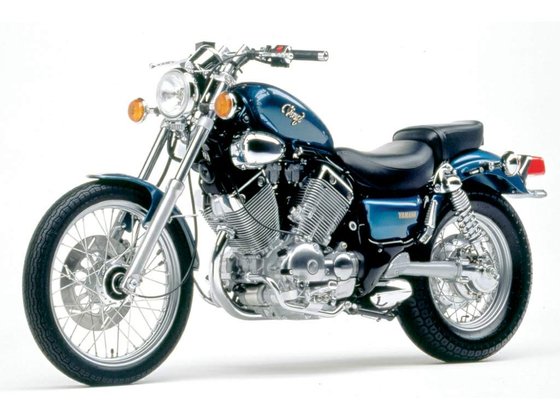
The Virago’s chassis is a study in pragmatic design. The 720mm (28.3-inch) seat height and narrow profile make it approachable for riders of all sizes, while the 1511mm (59.4-inch) wheelbase and 182kg (401 lbs) dry weight lend it a planted, confidence-inspiring stance. At low speeds, the bike feels almost telepathic—flickable in parking lots and steady during U-turns.
The suspension setup is basic but effective. The 36mm telescopic forks and preload-adjustable twin shocks at the rear handle bumps with a plushness that’s surprising for a budget cruiser. However, pushing the bike through twistier roads reveals its limitations. The front end feels vague when leaned over, and the 140/90-15 rear tire prioritizes straight-line stability over cornering grip. This isn’t a bike for knee-down antics, but it’ll cruise through sweeping bends with ease if you’re not in a hurry.
Braking is adequate, with a single 298mm front disc and a rear drum brake. The front setup provides decent bite, though modern riders might crave ABS. The rear drum requires a firm stomp, especially in wet conditions. Upgrading to sintered pads or a braided steel line (available at MOTOPARTS.store) could sharpen responsiveness.
Design and Comfort: Classic Cruiser Vibes, Modern Practicality 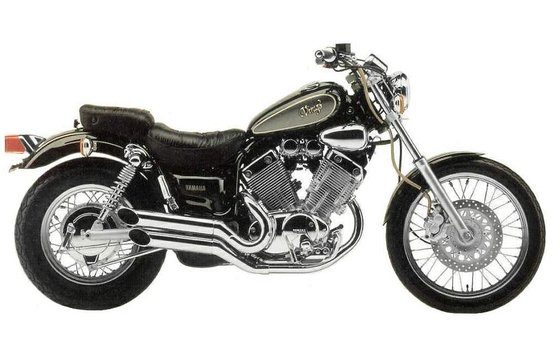
Yamaha nailed the cruiser aesthetic with the XV 535. The teardrop fuel tank, staggered exhaust pipes, and faux-hardtail rear frame scream “American classic,” but the proportions are distinctly Japanese—compact and unintimidating. The 13.5-liter (3.5-gallon) fuel tank is a letdown for long hauls, but it pairs well with the bike’s 17.6 km/l (41.4 mpg) efficiency, giving a realistic range of 240km (150 miles) before hitting reserve.
The rider triangle is more upright than your typical feet-forward cruiser. Pegs are mid-mounted, and the wide handlebars promote a relaxed posture. The seat is thinly padded but surprisingly comfortable for sub-2-hour rides. Pillions, however, get a raw deal—the rear perch is barely large enough for a backpack, let alone a passenger.
Instrumentation is spartan: a single analog speedometer with basic indicator lights. There’s no tachometer or fuel gauge, but the handlebar-mounted reserve petcock is a lifesaver. Vibration is minimal below 4,000 RPM, but mirrors get blurry near redline—a small price for an otherwise smooth ride.
Competition: How the Virago Stacks Up 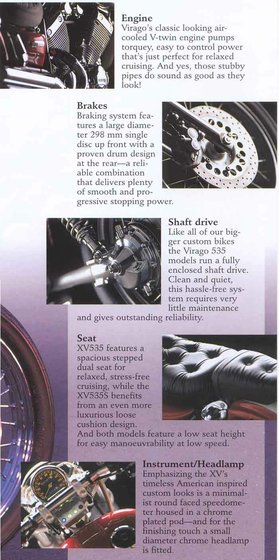
The XV 535 Virago existed in a crowded arena of mid-displacement cruisers. Here’s how it compares to its rivals:
-
Honda Shadow 600 (1998–2003):
The Shadow counters with a slightly larger 583cc V-twin and hydraulic valve lifters (no manual adjustments!). It’s smoother and quieter but weighs 30kg (66 lbs) more, blunting its agility. The Virago’s shaft drive edges out the Shadow’s chain for low-maintenance commuting. -
Kawasaki Vulcan 500 (1996–2009):
Powered by a parallel-twin derived from the Ninja 500, the Vulcan offers sharper handling and a 6-speed gearbox. However, its engine lacks the V-twin character, and the chain drive requires more upkeep. The Virago’s torquier low-end suits city riding better. -
Suzuki Intruder 800 (1998–2005):
The Intruder’s 805cc V-twin delivers more power, but its heft and taller seat height make it less beginner-friendly. The Virago’s lighter frame and lower center of gravity win for maneuverability.
Verdict: The XV 535 isn’t the fastest or flashiest, but its blend of simplicity, reliability, and approachability makes it a standout for riders valuing substance over specs.
Maintenance: Keeping Your Virago Thriving 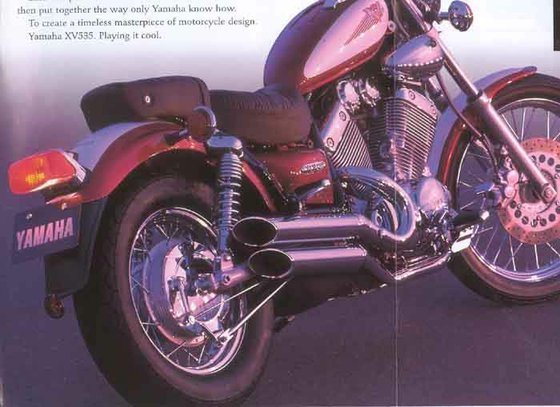
Ownership costs are where the XV 535 truly shines. Here’s what to prioritize:
-
Valve Adjustments:
Check valve clearances every 8,000 km (5,000 miles): 0.07–0.12mm (0.0028–0.0047in) for intake, 0.12–0.17mm (0.0047–0.0067in) for exhaust. Shim-under-bucket design requires patience but isn’t overly complex. -
Carburetor Tuning:
The Mikunis demand periodic cleaning, especially if the bike sits. Keep the air screw at 2.5 turns out for optimal idle. Consider a carb rebuild kit from MOTOPARTS.store if throttle response gets sluggish. -
Shaft Drive Care:
Replace the Endantriebsöl (final drive oil) every 12,000 km (7,500 miles) with 190ml of SAE 80W GL-4. No chain lube needed—this is the Virago’s party trick. -
Tire Pressures:
Stick to 2.0 bar (29 psi) front and 2.5 bar (36 psi) rear for optimal wear and grip. The stock tires are dated; upgrading to modern radials (like Michelin Commander III) transforms wet weather confidence. -
Brake Fluid & Lines:
Flush the DOT 4 fluid every two years. Swapping to steel-braided lines improves lever feel dramatically.
Final Thoughts: A Cruiser That Ages Like Fine Wine 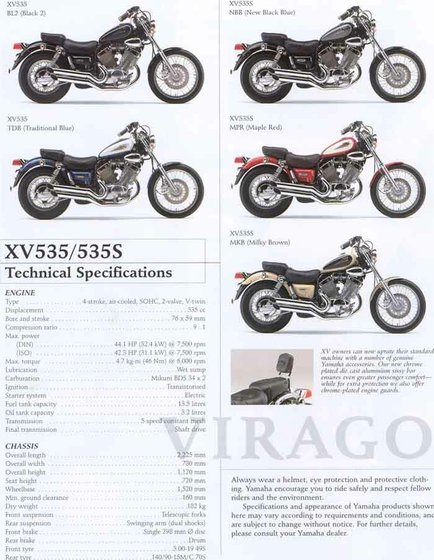
The Yamaha XV 535 Virago isn’t about chasing horsepower or breaking lap records. It’s about the joy of uncomplicated riding—a machine that forgives mistakes, shrugs off neglect, and always starts with a thumb of the button. Whether you’re a new rider cutting your teeth or a veteran craving a stress-free commuter, this Virago generation delivers. And when it’s time to personalize or refresh worn parts, MOTOPARTS.store has everything from performance shocks to vintage-style grips to keep your XV 535 rolling for another decade.
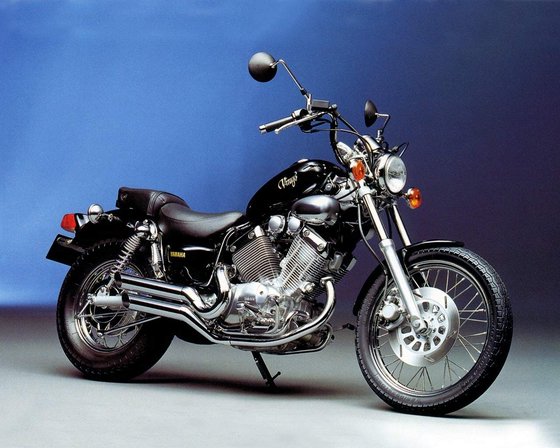
The Yamaha XV 535 Virago: Proof that the best motorcycles aren’t always the fastest—they’re the ones you’ll never want to sell.

Specifications sheet
| Engine | |
|---|---|
| Stroke: | Four-stroke |
| Max power: | 32 kW | 43.0 hp |
| Max torque: | 43 Nm |
| Fuel system: | 2x Mikuni BDS34 carburetors |
| Max power @: | 7500 rpm |
| Displacement: | 535 ccm |
| Max torque @: | 6000 rpm |
| Bore x Stroke: | 76 x 59 mm (3.0 x 2.3 in) |
| Configuration: | V |
| Cooling system: | Air-cooled |
| Compression ratio: | 9.0:1 |
| Number of cylinders: | 2 |
| Dimensions | |
|---|---|
| Wheelbase: | 1511 mm (59.4 in) |
| Dry weight: | 182 |
| Wet weight: | 190 |
| Seat height: | 700 mm (27.5 in) |
| Overall width: | 780 mm (30.7 in) |
| Overall length: | 2225 mm (87.6 in) |
| Ground clearance: | 145 mm (5.7 in) |
| Fuel tank capacity: | 13.5 L (3.5 US gal) |
| Drivetrain | |
|---|---|
| Clutch: | Wet multi-plate, cable-operated |
| Final drive: | shaft |
| Transmission: | 5-speed constant mesh |
| Maintenance | |
|---|---|
| Engine oil: | 10W-40 or 20W-40 |
| Idle speed: | 1200 ± 50 RPM |
| Brake fluid: | DOT 4 |
| Spark plugs: | NGK BPR7ES or NGK BPR7EIX |
| Spark plug gap: | 0.8 |
| Final drive oil: | 190 ml SAE 80W GL-4 |
| Fork oil capacity: | 0.456 |
| Engine oil capacity: | 2.8 |
| Engine oil change interval: | Every 5000 km or 2 years |
| Valve clearance (intake, cold): | 0.07–0.12 mm |
| Valve clearance check interval: | 24,000 km / 15,000 mi |
| Valve clearance (exhaust, cold): | 0.12–0.17 mm |
| Recommended tire pressure (rear): | 2.5 bar (36 psi) |
| Recommended tire pressure (front): | 2.0 bar (29 psi) |
| Chassis and Suspension | |
|---|---|
| Rake: | 31.5° |
| Frame: | Steel double cradle |
| Trail: | 125 mm (4.9 in) |
| Rear tire: | 140/90-15 |
| Front tire: | 3.00 s19 |
| Rear brakes: | Drum |
| Front brakes: | Single 298 mm disc, 2-piston caliper |
| Rear suspension: | Twin shock, adjustable preload |
| Front suspension: | Telescopic forks, 36 mm diameter |
| Rear wheel travel: | 85 mm (3.3 in) |
| Front wheel travel: | 150 mm (5.9 in) |



